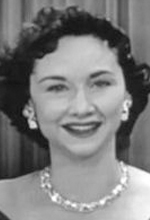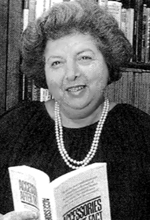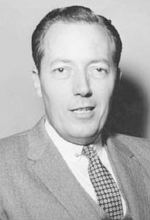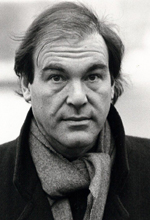The JFK Assassination According to the History Textbooks – Part Two
(Click here if your browser is having trouble loading the above.)
Part 3: Afterword
DE-NORMALIZING THE WAY HISTORY BOOKS COVER THE JFK ASSASSINATION
The community of serious researchers on the JFK assassination, today’s and yesterday’s, deserves high praise for their resilience and dedication. With very limited means and facing the risk of constant ridicule, they have persevered and brought us into places considered taboo. It’s a territory where journalists, politicians and, as we can see, historians refuse to go. Their names are slandered in writing, and on the Web, some are threatened with lawsuits and others are intimidated. But through it all, they have shown that, in addition to the major conclusions of the Warren Report, there are even serious questions about how Dorothy Kilgallen died as she was working on the JFK case following her interview of Jack Ruby. (Click here for a review)
Yet still, they persevere by revealing witnesses that the Warren Commission refused to talk to, getting their hands on the quasi-confiscated Zapruder film and showing it on national TV, accessing revealing documents through information initiatives, combing through the national archives and getting their messages out through books, articles, interviews and seminars.
While their efforts – with the help of people like Jim Garrison and Oliver Stone – have somewhat paid off, with the creation of the HSCA, and the important releases of documents through the ARRB – with more to come in 2017 – they have not succeeded in changing the outdated narratives in mainstream media and history books. As shown through the AHA professional standards code, what is in these history books is not history. It is more like stenography for the MSM.
As opposed to the broadcast of the Zapruder film on national TV, and the release of the JFK movie, most JFK books, articles, and interviews are seen and heard by a small, albeit knowledgeable audience with almost no support from mainstream media. Therefore, for the vast majority of time, these authors are preaching to the already converted.
The first phase of research, carried out by people like Vincent Salandria and Sylvia Meagher, was characterized by a lone wolf approach. It involved a lot of grunt work, directly in the trenches: reading through the 26 volumes of the Warren Commission, searching for first-hand witnesses, identifying inconsistencies and concluding that there must have been a conspiracy. Except for Jim Garrison, very few of the pioneers could make a strong case about who the conspirators actually were.
The Mary Ferrell Foundation, National Archives, COPA and Lancer conferences, and shows hosted by the likes of Alan Dale and Len Osanic, helped bring in a second phase. This allowed researchers to network better with one another and speed up research and information sharing. With the ARRB release of documents, persons of interest confessions and other key findings, there are now clearer templates of what could have happened that are more convincing than the notion of one misguided outcast, waiting for the sixth floor to be deserted, putting together a disassembled rifle and “sniper’s lair” in no time flat, then firing off three lucky shots in six seconds with an unreliable bolt-action rifle. A man with no discernible motive, who was then bumped off two days later by another lone-nut nightclub owner who got himself incarcerated and condemned to the gas chamber out of sympathy for Jackie Kennedy.
 |  |  |  |
| From left to right: Dorothy Kilgallen; Sylvia Meagher; Jim Garrison; Oliver Stone |
It is this author’s opinion that the research community now needs to enter a new phase if it wishes to reach a universal audience, one that sees research efforts bolstered by business administration support focused on an approach called “De-Normalization,” which was used successfully against the tobacco industry as discussed in Part 1 of this article. There was a time when all the following was true: Cigarettes were smoked inside schools, bars, restaurants and places of work; they were advertised on TV with cowboy and soldier personalities and healthy-looking models; claims were made that cigarettes were good for your health and that they did not cause cancer; they were part of logistical planning during war time. Much of this changed around the Truth campaign launches, where legislation (no smoking in public places and restrictions on product marketing), price control and communications (anti-Big Tobacco ad campaigns) combined to de-normalize its free reign.
The two ingredients that paved the way for this successful strategy were: 1) The victims were young; and, 2) They were being manipulated. Public relations specialists will tell you that they relish this type of situation, which is certain to get media and political attention.
These very same ingredients are present in the issue of historical accounts of the assassination. It may be an overstatement, for now, to claim that students are being wittingly manipulated, but they certainly are not being transmitted a balanced and complete picture of this tragic landmark event. And furthermore, they constitute a young captive audience in a “nurturing” place that is dedicated to developing the minds of our youth with useful and accurate information often funded by the public. This makes the history books narrative on the JFK assassination a logical target for De-Normalization.
THE SIX STEPS TO DE-NORMALIZING THE CURRENT HISTORICAL NARRATIVE
1. Forming a task force and its consultants
The team that would lead this endeavor would be made up of knowledgeable researchers and other concerned specialists who have a reputation of doing diligent work and presenting information in a convincing way. They have the respect of their peers, they understand academia and they are not seen as loose cannons. Their areas of research and expertise are complementary.
2. Involving youth, parents and open-minded historians
The anti-tobacco crusaders’ message was strongly enhanced by the aid of teenage spokespeople and other concerned parties. It is one thing to hear a hardened pro-conspiracy messenger taking on an equally experienced historian, it is another to hear a student say that he would have liked to know more about how the HSCA contradicted many of the Warren Commission conclusions.
3. Preparing the case smartly and choosing the right narrative
By early 2018, hopefully after the release of the remaining unclassified archive documents, there should be a compelling case file that relies on the input of the very best research specialists in the field which can be communicated as effectively in classroom as in a courtroom. At this point the primary objective should be to gain the admission that the HSCA concluded that there was a probable conspiracy and to eliminate the affirmation that JFK was killed by a lone nut. It may be overly ambitious at this point, and perhaps not necessary to focus on whether or not Oswald was a conscious participant in the conspiracy.
The task force here should focus on strong evidence and discard the uncertain variety like some of the photo analysis. The case needs to be comprehensive and easy to digest. Also, the narrative must avoid making irresponsible statements like the CIA killed Kennedy. The Democratic Party of the slavery era is not today’s Democratic Party. The CIA has changed a lot since 1963. In 1963, the CIA did influence the government quite strongly and at times negatively. However, during the weapons of mass destruction propaganda offensive, it was the CIA that was fighting off proponents of that claim, like Dick Cheney. Second, the persons of interest who were CIA identified by a number of authors are few in number and in some cases were no longer working for the CIA at the time of the assassination – such as Dulles and Cabell. In other cases, they were outcasts on their way out, like Harvey. (This does not mean however that it deserves the blind confidence Blakey had for it during the HSCA hearings.)
4. Packaging the case
It is soon time for the all-defining documentary series to be produced that presents the real history of the assassination and the current research into it. This tool will provide a real go-to source for those, including the student, who wants to learn about the case and by-pass unreliable or incomplete sources.
5. Presenting the case
A small number of historians did show some degree of open-mindedness towards changing their accounts and listening to arguments. There should be a reach-out campaign to those who write the books, as well as history associations and their members. Also, those who choose the curriculum at the board and government levels should be targeted diplomatically at first. If this fails, the question that can be asked is if the continuing of the current narrative is even legal and if it should be challenged.
6. Publicizing the case
The Monkey trials, de-normalization strategies and youth and academia topics have in the past proven to be of great media interest. One school board or education department prohibiting the current portrayal of the assassination, or a legal challenge would be certain to draw universal attention to the case and the documentary while creating further doubt in the obsolete Warren Commission conclusions and also forcing history teachers to answer direct questions about the subject.
Obviously a De-Normalization operation requires financial, marketing, legal and administrative resources to go along with the researchers. The investment in time and money is important. The payoff however may be a lot more than one can imagine, especially if it helps expose the statement that was made about the real state of American democracy on and after November 22, 1963. Something that historians should be interested in.


